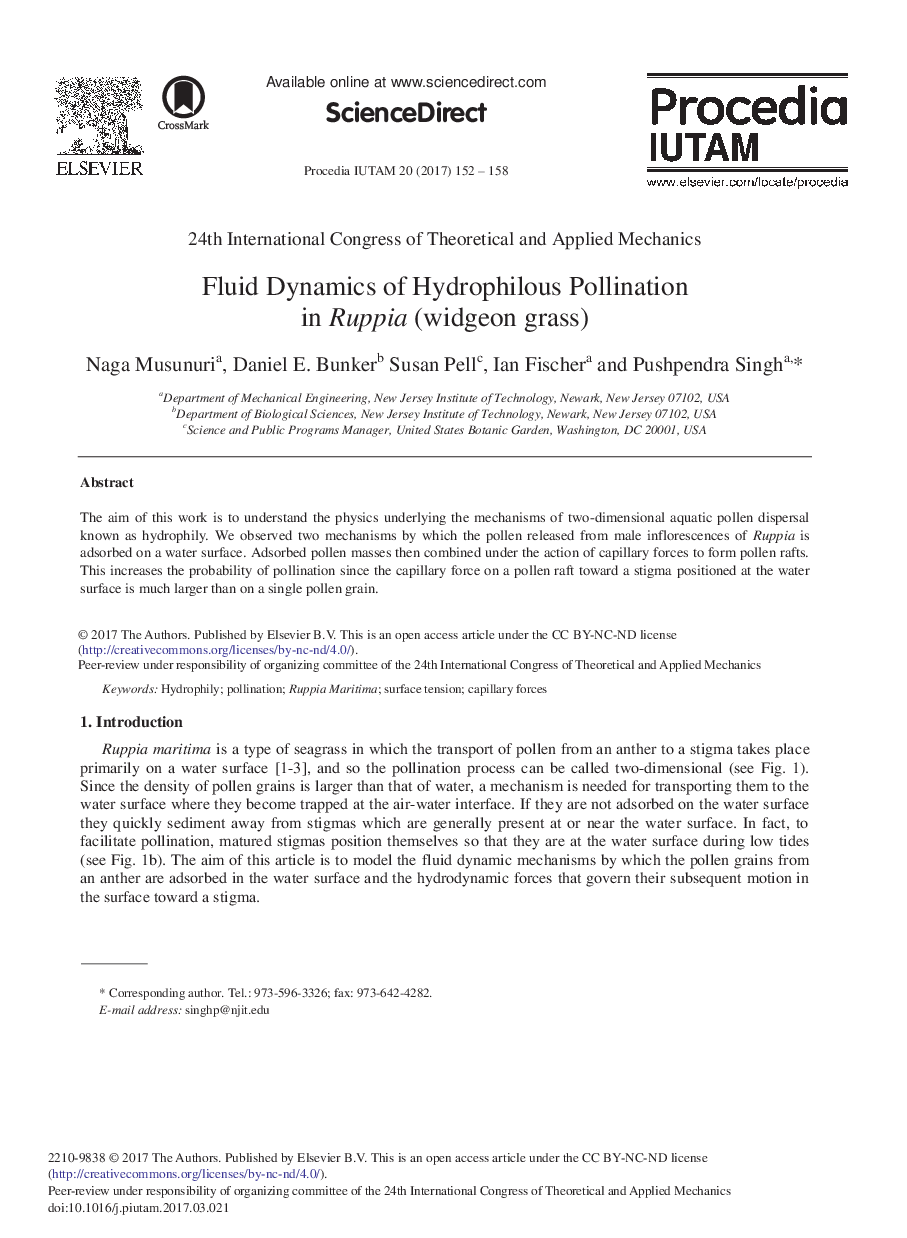| Article ID | Journal | Published Year | Pages | File Type |
|---|---|---|---|---|
| 5030597 | Procedia IUTAM | 2017 | 7 Pages |
Abstract
The aim of this work is to understand the physics underlying the mechanisms of two-dimensional aquatic pollen dispersal known as hydrophily. We observed two mechanisms by which the pollen released from male inflorescences of Ruppia is adsorbed on a water surface. Adsorbed pollen masses then combined under the action of capillary forces to form pollen rafts. This increases the probability of pollination since the capillary force on a pollen raft toward a stigma positioned at the water surface is much larger than on a single pollen grain.
Related Topics
Physical Sciences and Engineering
Engineering
Engineering (General)
Authors
Naga Musunuri, Daniel E. Bunker, Susan Pell, Ian Fischer, Pushpendra Singh,
